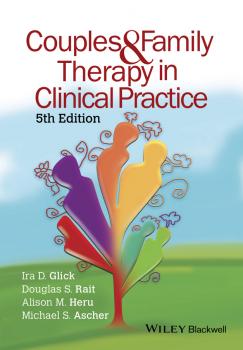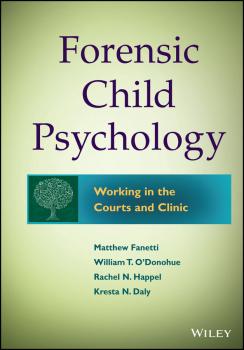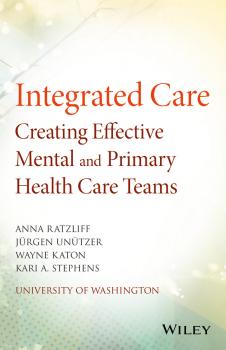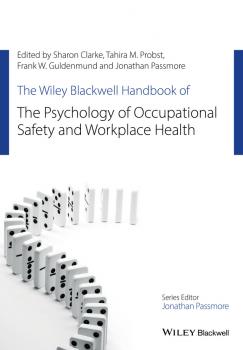Общая психология
Различные книги в жанре Общая психологияThe Wiley Blackwell Handbook of the Psychology of Training, Development, and Performance Improvement
The latest Wiley Blackwell Handbook of Organizational Psychology uses a psychological perspective, and a uniquely global focus, to review the latest literature and research in the interconnected fields of training, development, and performance appraisal. Maintains a truly global focus on the field with top international contributors exploring research and practice from around the world Offers researchers and professionals essential information for building a talented organization, a critical and challenging task for organizational success in the 21st century Covers a diverse range of topics, including needs analysis, job design, active learning, self-regulation, simulation approaches, 360-degree feedback, and virtual learning environments
Crime Classification Manual. A Standard System for Investigating and Classifying Violent Crime
Praise for Crime Classification Manual «The very first book by and for criminal justice professionals in the major case fields. . . . The skills, techniques, and proactive approaches offered are creatively concrete and worthy of replication across the country. . . . Heartily recommended for those working in the 'front line' of major case investigation.» —John B. Rabun Jr., ACSW, Executive Vice President and Chief Operating Officer, National Center for Missing and Exploited Children «[CCM] is an outstanding resource for students pursuing forensic science degrees. It provides critical information on major crimes, which improve the user's ability to assess and evaluate.» —Paul Thomas Clements, PhD, APRN-BC, CGS, DF-IAFN Drexel University Forensic Healthcare Program The landmark book standardizing the language, terminology, and classifications used throughout the criminal justice system Arranged according to the primary intent of the criminal, the Crime Classification Manual, Third Edition features the language, terms, and classifications the criminal justice system and allied fields use as they work to protect society from criminal behavior. Coauthored by a pioneer of modern profiling and featuring new coverage of wrongful convictions and false confessions, the Third Edition: Tackles new areas affected by globalization and new technologies, including human trafficking and internationally coordinated cybercrimes Expands discussion of border control, The Bureau of Alcohol, Tobacco, Firearms and Explosives (ATF), and Homeland Security Addresses the effects of ever-evolving technology on the commission and detection of crime The definitive text in this field, Crime Classification Manual, Third Edition is written for law enforcement personnel, mental health professionals, forensic scientists, and those professionals whose work requires an understanding of criminal behavior and detection.
Communication in Investigative and Legal Contexts. Integrated Approaches from Forensic Psychology, Linguistics and Law Enforcement
Communication in Forensic Contexts provides in-depth coverage of the complex area of communication in forensic situations. Drawing on expertise from forensic psychology, linguistics and law enforcement worldwide, the text bridges the gap between these fields in a definitive guide to best practice. Offers best practice for understanding and improving communication in forensic contexts, including interviewing of victims, witnesses and suspects, discourse in courtrooms, and discourse via interpreters Bridges the knowledge gaps between forensic psychology, forensic linguistics and law enforcement, with chapters written by teams bringing together expertise from each field Published in collaboration with the International Investigative Interviewing Research Group, dedicated to furthering evidence-based practice and practice-based research amongst researchers and practitioners International, cross-disciplinary team includes contributors from North America, Europe and Asia Pacific, and from psychology, linguistics and forensic practice
Couples and Family Therapy in Clinical Practice
Couples and Family Therapy in Clinical Practice has been the psychiatric and mental health clinician's trusted companion for over four decades. This new fifth edition delivers the essential information that clinicians of all disciplines need to provide effective family-centered interventions for couples and families. A practical clinical guide, it helps clinicians integrate family-systems approaches with pharmacotherapies for individual patients and their families. Couples and Family Therapy in Clinical Practice draws on the authors’ extensive clinical experience as well as on the scientific literature in the family-systems, psychiatry, psychotherapy, and neuroscience fields.
The Wiley Handbook of What Works in Child Maltreatment. An Evidence-Based Approach to Assessment and Intervention in Child Protection
A comprehensive guide to empirically supported approaches for child protection cases The Wiley Handbook of What Works in Child Maltreatment offers clinicians, psychologists, psychiatrists and other professionals an evidence-based approach to best professional practice when working in the area of child protection proceedings and the provision of assessment and intervention services in order to maximize the well-being of young people. It brings together a wealth of knowledge from expert researchers and practitioners, who provide a comprehensive overview of contemporary work informing theory, assessment, service provision, rehabilitation and therapeutic interventions for children and families undergoing care proceedings. Coverage includes theoretical perspectives, insights on the prevalence and effects of child neglect and abuse, assessment, children’s services, and interventions with children, victims and families.
Forensic Child Psychology. Working in the Courts and Clinic
A guide to working effectively with children in the criminal justice system Uniquely designed to train psychology, criminology, and social work students to work with children in the criminal justice system—both in the courtroom and as clinical clients—Forensic Child Psychology presents current research and practice-based knowledge to improve the judicial and child welfare systems. Authors Matthew Fanetti, William T. O'Donohue, Rachel N. Happel, and Kresta N. Daly bring their combined expertise in child psychology, forensic interviewing, and criminal prosecution to bear on the process of obtaining accurate information from children involved in legal proceedings, preparing professionals to work with: Children who are victims of crime Children who are perpetrators of crime Children who are witnesses of crime The book also covers related topics, including mandated reporting, the structure of juvenile justice and advocacy systems, and contains sidebars, summaries, glossaries, and study questions to assist with material mastery. This is an excellent resource for students of child psychopathology in psychology, social work, nursing, and criminal justice at the graduate and late undergraduate stage of their educations.
Handbook of Autism and Pervasive Developmental Disorders, Diagnosis, Development, and Brain Mechanisms
The newest edition of the most comprehensive handbook on autism and related disorders Since the original edition was first published more than a quarter of a century ago, The Handbook of Autism and Pervasive Developmental Disorders, Volume 1: Diagnosis, Development, and Brain Mechanisms, has been the most influential reference work in the field of autism and related conditions. The new, updated Fourth Edition takes into account the changes in the disorders' definitions in the DSM-V and ICD-10 that may have profound implications for diagnosis and, by extension, access to services. Along with providing practical clinical advice–including the role of psychopharmacology in treatment—the handbook codifies the ever-expanding current body of research throughout both volumes , offering a wealth of information on the epidemiology of autism and the genetic, environmental, biochemical, social, and neuropathological aspects of the disorder. Volume 1 includes: Information on outcomes in adults with autism spectrum disorders A range of issues and interventions important from infancy, though adolescence and beyond for individuals with autism spectrum disorders Current information about play development, including skills, object play, and interventions Coverage of the state of genetic, biochemical, and neuropathological autism research Chapters on psychopharmacology and medical care in autism and related conditions The new edition includes the relevant updates to help readers stay abreast of the state of this rapidly evolving field and gives them a guide to separate the wheat from the chaff as information about autism proliferates.
Integrated Care. Creating Effective Mental and Primary Health Care Teams
An integrated, collaborative model for more comprehensive patient care Creating Effective Mental and Primary Health Care Teams provides the practical information, skills, and clinical approaches needed to implement an integrated collaborative care program and support the members of the care team as they learn this new, evidence-based, legislatively mandated care delivery system. Unique in presenting information specifically designed to be used in an integrated, collaborative care workflow, this book provides specific guidance for each member of the team. Care managers, consulting psychiatrists, primary care providers, and administrators alike can finally get on the same page in regard to patient care by referring to the same resource and employing a common framework. Written by recognized experts with broad research, clinical, implementation, and training experience, this book provides a complete solution to the problem of fragmented care. Escalating costs and federal legislation expanding access to healthcare are forcing the industry to transition to a new model of health care delivery. This book provides guidance on navigating the changes as a team to provide the best possible patient care. Integrate physical and behavioral care Use evidence-based treatments for both Exploit leading-edge technology for patient management Support each member of the collaborative care team Strong evidence has demonstrated the efficacy of a collaborative care approach for delivering mental health care to patients in a primary care setting. The field is rapidly growing, but few resources are available and working models are limited. This book provides a roadmap for transitioning from traditional methods of health care to the new integrated model. Providers ready to move to the next level of care will find Creating Effective Mental and Primary Health Care Teams an invaluable resource.
The Wiley Blackwell Handbook of the Psychology of the Internet at Work
This authoritative Wiley Blackwell Handbook in Organizational Psychology focuses on individual and organizational applications of Internet-enabled technologies within the workplace. The editors have drawn on their collective experience in collating thematically structured material from leading writers based in the US, Europe, and Asia Pacific. Coinciding with the growing international interest in the application of psychology to organizations, the work offers a unique depth of analysis from an explicitly psychological perspective. Each chapter includes a detailed literature review that offers academics, researchers, scientist-practitioners, and students an invaluable frame of reference. Coverage is built around competencies set forth by regulatory agencies including the APA and BPS, and includes cyberloafing, ergonomics of human-computer interaction at work, permanent accessibility and work-life balance, and trust in online environments.
The Wiley Blackwell Handbook of the Psychology of Occupational Safety and Workplace Health
A Wiley Blackwell Handbook of Organizational Psychology focusing on occupational safety and workplace health. The editors draw on their collective experience to present thematically structured material from leading thinkers and practitioners in the USA, Europe, and Asia Pacific Provides comprehensive coverage of the major contributions that psychology can make toward the improvement of workplace safety and employee health Equips those who need it most with cutting-edge research on key topics including wellbeing, safety culture, safety leadership, stress, bullying, workplace health promotion and proactivity









